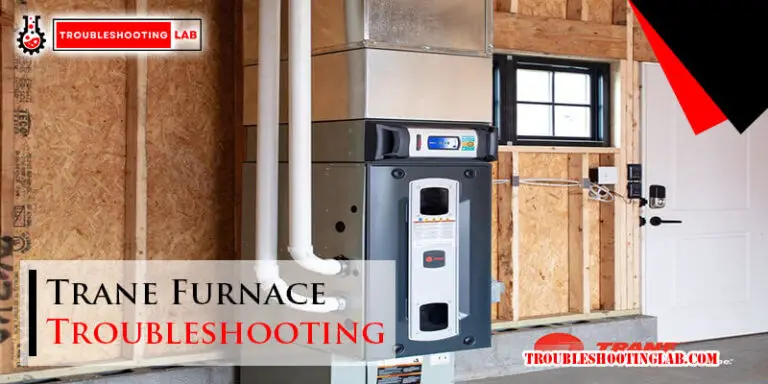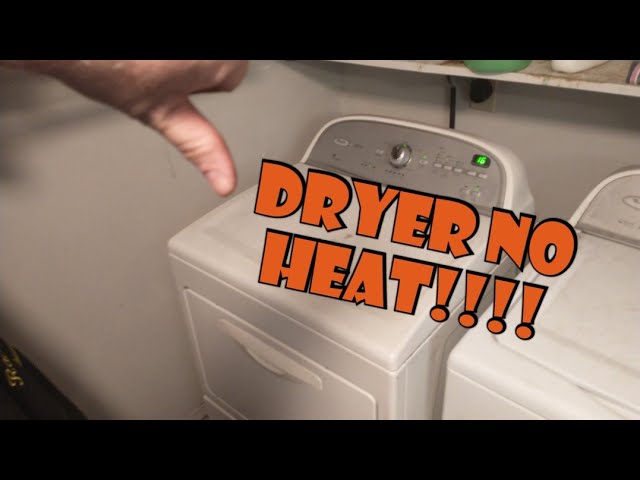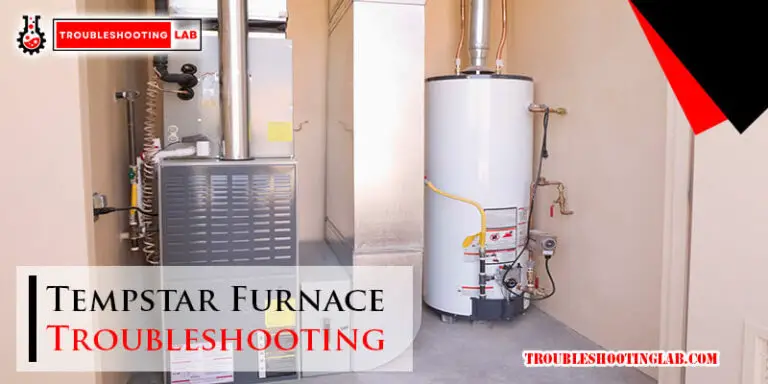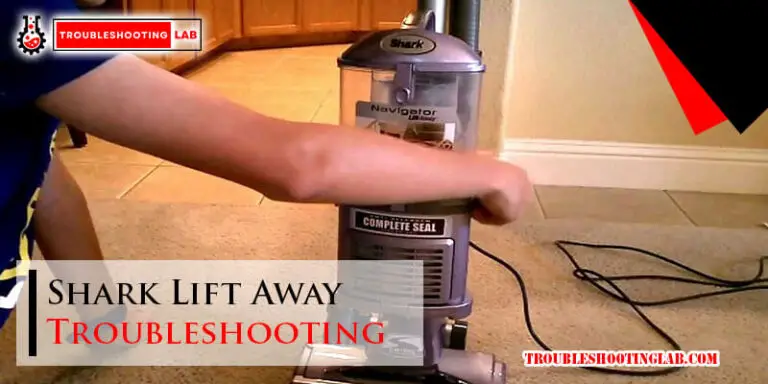Bosch Heat Pump Troubleshooting: Expert Tips for Success
For Bosch heat pump troubleshooting, check the thermostat settings, air filter, condenser unit, and high voltage at the ECM motor harness circuit. Additionally, if the heat pump runs continuously without cycling off, it could indicate a malfunctioning thermostat, refrigerant leak, or faulty compressor.

Common Heat Pump Issues
Heat pumps are an energy-efficient option for heating and cooling your home. However, like any other HVAC system, they can encounter problems from time to time. In this section, we will discuss some common heat pump issues and how to troubleshoot them.
Heat Pump Running But Not Cooling
If your heat pump is running but not cooling your home, there are a few possible causes. Firstly, check the thermostat settings to ensure they are appropriate for cooling mode. If the settings are correct, then the next step is to check the air filter. A dirty or clogged filter can restrict airflow, preventing the heat pump from effectively cooling your home. So, replace or clean the air filter if necessary.
If the thermostat and air filter are not to blame, the issue may lie with the condenser unit. Inspect the condenser for any debris blocking the airflow. Clear away any leaves, grass, or other obstructions that could be affecting the unit’s performance. Additionally, check if the condenser coils are dirty or frozen. Dirty coils can reduce the heat transfer process, while frozen coils indicate a refrigerant or airflow problem. In either case, professional assistance may be required to address the issue.
Unit Running Continuously Without Cycling Off
A heat pump running continuously without cycling off is a common problem that can occur due to multiple reasons. One possible cause is a malfunctioning thermostat. If the thermostat is not accurately sensing the temperature, it may keep the heat pump running longer than necessary. In this case, you can try replacing the thermostat or adjusting its sensitivity.
Another potential cause is a refrigerant leak. Low refrigerant levels can make the heat pump work harder, leading to continuous operation. It is crucial to have a professional HVAC technician locate and repair the leak to restore proper operation.
A faulty compressor can also cause the unit to run continuously. The compressor is responsible for circulating the refrigerant and pressurizing it to facilitate heat exchange. If the compressor is malfunctioning, it may not turn off when it should. A qualified technician can inspect and repair or replace the compressor as needed.
How To Manually Reset A Heat Pump
If you need to manually reset your heat pump, the process will depend on the specific model and manufacturer. Some heat pumps have a reset button, which you can press to initiate the reset. However, if your heat pump does not have a reset button, you can use the power switch.
- Turn off the power switch of the heat pump.
- Wait for two to three minutes.
- Turn on the power switch again.
This process allows the heat pump to reset itself and can resolve minor issues that may be causing operational problems. However, if the issue persists after resetting the heat pump, it is best to contact a professional HVAC technician for further assistance.
Troubleshooting Videos
If you’re experiencing issues with your Bosch heat pump, troubleshooting the problem can save you time and money. Fortunately, Bosch provides a range of helpful troubleshooting videos that can guide you through diagnosing and resolving common problems. These videos cover a variety of topics, from Bosch IDS diagnostics to troubleshooting the transducer on the Bosch IDS inverter heat pump. Let’s take a closer look at some of these videos and the valuable information they provide.
Bosch Ids Diagnostics
The Bosch IDS diagnostics video is a comprehensive guide to understanding and troubleshooting the Bosch IDS heat pump. In this detailed video, you’ll learn about various aspects of the system, including adding charge, reading the display, and common issues that can arise. The video also covers topics like the function of the buttons on the control board and how to apply conductivity grease properly. Whether you’re a homeowner or a technician, this video is a valuable resource for troubleshooting your Bosch IDS heat pump.
Bosch Wshp Troubleshooting
The Bosch WSHP troubleshooting video focuses on the specific challenges that may arise with a Bosch water source heat pump (WSHP). This video covers important topics such as the history of Bosch heat pumps, why lower flow rates occur in open loop systems, and how to verify flow direction. Additionally, the video provides information on pressure drop, contactor amperage limits, and calculating supplemental heat. This comprehensive video addresses a wide range of troubleshooting scenarios specific to Bosch WSHPs.
New Bosch Heat Pump Not Working! Oops!
Sometimes, even a new Bosch heat pump can encounter issues. The “New Bosch Heat Pump Not Working! Oops!” video from Jeff’s HVAC Adventures covers potential issues you might face with a new heat pump installation. This video provides troubleshooting tips on topics such as the dual air geothermal unit, condenser motor, and adjusting the wheel on the shaft. It also features thermal imaging to help identify potential problems. If you’ve recently installed a new Bosch heat pump and are experiencing issues, this video can help you troubleshoot and resolve them.
Troubleshoot Transducer On Bosch Ids Inverter Heat Pump
The final video we’ll discuss focuses on troubleshooting the transducer on the Bosch IDS inverter heat pump. In this video by TSS Associates Inc, you’ll learn how to test your Bosch heat pump and troubleshoot specific issues related to the transducer. The video provides step-by-step instructions on moving the fan switch to ON at the thermostat, checking high voltage at the ECM motor harness circuit, and more. If you suspect the transducer is causing problems with your Bosch IDS inverter heat pump, this video will guide you through the troubleshooting process.
By watching these troubleshooting videos and following the instructions provided, you can diagnose and potentially resolve common issues with your Bosch heat pump. Remember, if you’re unsure or unable to resolve the problem on your own, it’s always best to contact a professional HVAC technician for assistance.
Expert Tips For Success
When it comes to troubleshooting your Bosch heat pump, having expert tips on hand can make all the difference. In this section, we will discuss some essential techniques that can help you navigate common issues and ensure the success of your troubleshooting efforts.
Verifying Flow Direction
One of the first steps in troubleshooting your Bosch heat pump is verifying the flow direction. This is an important aspect of troubleshooting as it helps determine if there are any issues with the system’s flow. To do this, you can follow these steps:
- Locate the flow direction indicator on your Bosch heat pump.
- Ensure that the arrow on the indicator is pointing in the correct direction, which is typically towards the heat pump.
- If the flow direction is incorrect, you may need to adjust the valves or consult a professional for further assistance.
Calculating Supplemental Heat
Calculating supplemental heat is crucial for determining if your Bosch heat pump is providing enough heating capacity. This can be done by following these steps:
- Check the specifications of your Bosch heat pump to determine the supplemental heat capacity.
- Measure the difference between the desired indoor temperature and the outdoor temperature.
- Multiply the temperature difference by the supplemental heat capacity to calculate the additional heat required.
- Ensure that your Bosch heat pump is capable of providing the required supplemental heat.
Electrical Heat Measurement
Measuring electrical heat is another important step in troubleshooting your Bosch heat pump. To measure electrical heat, you can follow these steps:
- Disconnect power to your Bosch heat pump.
- Use a multimeter to measure the resistance across the heating element.
- Compare the measured resistance to the manufacturer’s specifications to determine if the heating element is functioning properly.
- If the measured resistance is outside the specifications, you may need to replace the heating element.
Calculating Flow Rate
Calculating the flow rate of your Bosch heat pump is crucial for ensuring optimal performance. Here’s how you can calculate the flow rate:
- Measure the time it takes for a known volume of water to flow through your Bosch heat pump.
- Divide the known volume by the measured time to calculate the flow rate.
- Compare the calculated flow rate to the manufacturer’s specifications to ensure it falls within the recommended range.
- If the flow rate is outside the recommended range, you may need to adjust the flow control valves or consult a professional for further assistance.
Calculating Net Capacity
Calculating the net capacity of your Bosch heat pump is essential for determining its heating or cooling capabilities. To calculate the net capacity:
- Determine the total capacity of your Bosch heat pump by referring to its specifications.
- Subtract any losses in the system, such as ductwork or heat loss through windows.
- The resulting value is the net capacity, which represents the actual heating or cooling output of your Bosch heat pump.
- Ensure that the net capacity meets your heating or cooling requirements.
By following these expert tips for success, you can effectively troubleshoot your Bosch heat pump and resolve any issues that may arise. Remember to consult the manufacturer’s guidelines or seek professional assistance if needed.
Frequently Asked Questions On Bosch Heat Pump Troubleshooting
How Do I Test My Bosch Heat Pump?
To test your Bosch heat pump, follow these steps: 1. Move the FAN switch to ON on your thermostat. 2. Check the high voltage at the ECM motor harness circuit. 3. If the problem persists, reset the heat pump by turning off the power switch for 2-3 minutes and then turning it back on.
If you’re still experiencing issues, it’s recommended to contact a local HVAC dealer for further assistance.
What Is The Most Common Problem With Heat Pumps?
A common problem with heat pumps is when they run continuously without cycling off. This can be caused by a malfunctioning thermostat, refrigerant leak, or faulty compressor.
Why Is My Heat Pump Running But Not Cooling?
If your heat pump is running but not cooling, check thermostat settings, air filter, and condenser unit for issues. Contact your local HVAC dealer if the problem persists.
How Do I Manually Reset My Heat Pump?
To manually reset your heat pump, follow these steps: 1. Turn off the power switch. 2. Wait for two to three minutes. 3. Turn the power switch back on. Make sure your heat pump doesn’t have a reset button. If it does, press the reset button instead of turning off the power switch.
What Are The Common Problems With Heat Pumps?
Heat pumps can experience issues such as running continuously, refrigerant leaks, or faulty compressors.
Conclusion
To troubleshoot Bosch heat pump issues, it’s important to follow specific steps. Start by checking thermostat settings, the air filter, and the condenser unit. If the unit runs continuously without cycling off, it may be due to a malfunctioning thermostat, refrigerant leak, or faulty compressor.
If the heat pump isn’t cooling, contact your local HVAC dealer. Remember, always turn off the power switch for a manual reset. For more troubleshooting tips and information, visit the Bosch Home Comfort website. Stay informed about our company and join us on social media.






